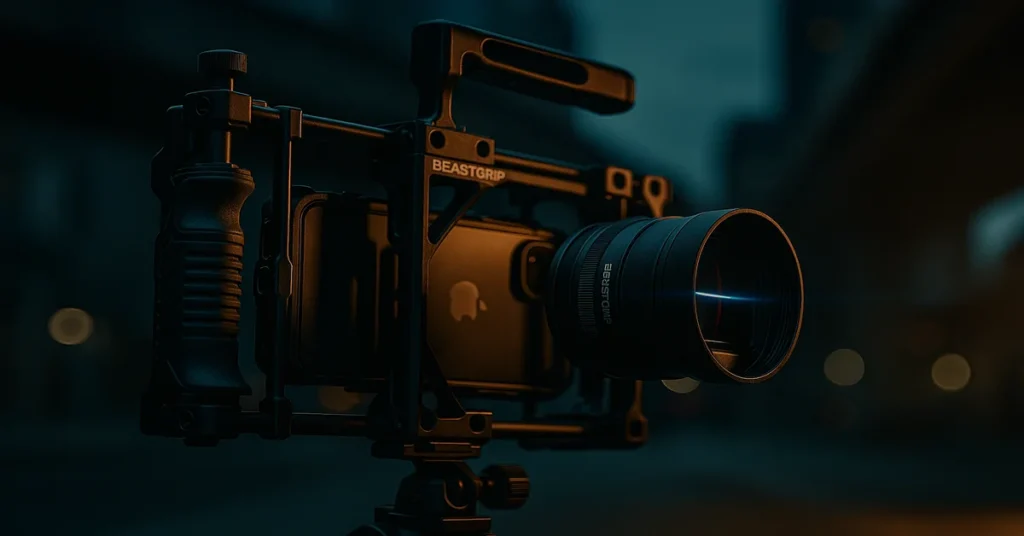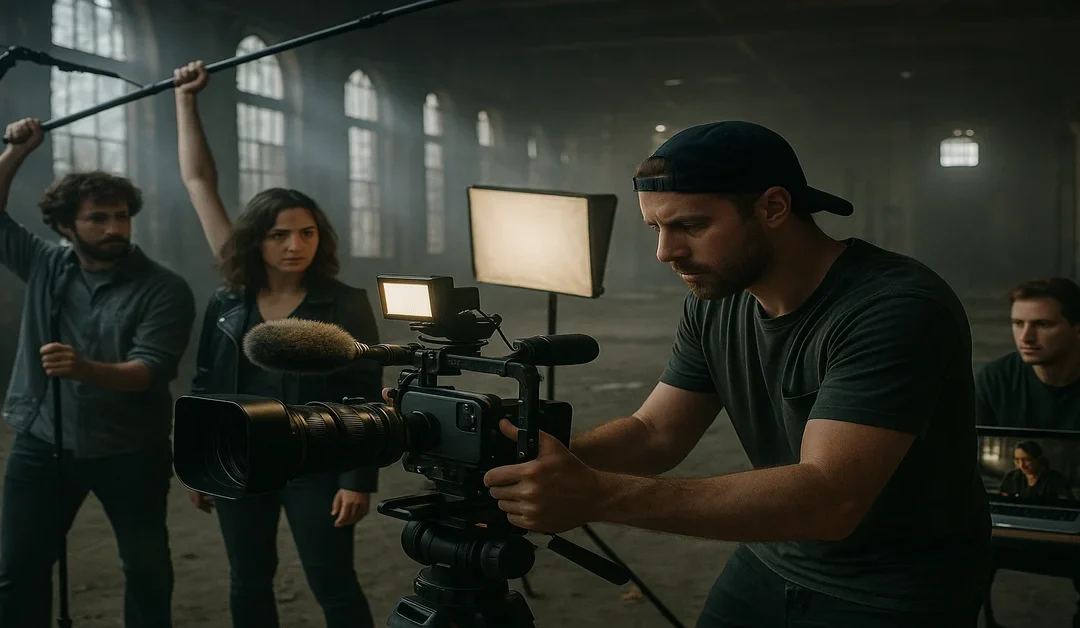📱 Shot on iPhone. Released in Theaters. No, You’re Not Dreaming.
It finally happened. Hollywood made a full-on feature film with the same device you use to film your dog in portrait mode.
Danny Boyle’s 28 Years Later, the highly anticipated sequel to 28 Days Later, was shot using the iPhone 15 Pro Max. Yes, seriously. Not as a gimmick. As a creative decision. A gritty, experimental, cinematic flex that proves one thing:
Anyone with the right tools and vision can create theatrical-level cinematic content with iPhone.
This wasn’t a budget hack. It was a stylistic, artistic leap. And with Beastgrip’s professional iPhone filmmaking gear behind the scenes, the line between cinema cameras and smartphones just got blurred into oblivion.
How They Pulled Off Hollywood-Grade Shots with a Smartphone
Let’s get one thing straight: they didn’t just duct tape an iPhone to a stick and call it a day. Boyle’s team leaned hard into gear that turned a smartphone into a serious piece of cinema tech.
They used:
- Beastcage: a rugged aluminum cage that lets you mount lenses, lights, and mics while protecting your phone.
- Beastgrip Anamorphic Lens: adds that wide-screen letterbox look and signature Hollywood lens flares.
- DOF Adapters: allowing them to mount professional PL mount lenses (yes, the kind used on RED and ARRI cameras).
- Custom rigs: including one insane bullet-time-style rig that stacked 20 iPhones into a semicircle.
All of this let the film retain the raw, handheld energy of the original 28 Days Later, but upgraded for 2025.
The result? A movie that feels up close, in-your-face, and intimate—without sacrificing cinematic punch.
They even captured some shots that would have been almost impossible with bulky cinema gear, like high-speed chase scenes in tight corridors and reactive handheld shots in chaotic crowds. The iPhone’s small footprint meant actors and camera operators could move naturally, and that realism oozes out of the screen.
🔧 The Gear You Need to Create Cinematic Content with iPhone
Here’s how you can start filming your own blockbuster scenes—no Hollywood budget required:
1. Cage Your Phone Like a Pro
Start with the Beastcage. It locks in your phone and gives you the flexibility to mount gear securely.
2. Add Anamorphic Flavor
The Beastgrip 1.33x Anamorphic Lens is a must-have if you want cinematic flares, horizontal lens distortion, and a widescreen aspect ratio.
3. Mount Real Cinema Lenses
Using the DOF Adapter MK2, you can mount DSLR or PL-mount cinema lenses. Yes, this means you can use glass designed for six-figure film setups—on your phone.
4. Use a Pro-Level App
Skip the default camera. Use apps like FiLMiC Pro or Blackmagic Camera to control white balance, ISO, focus, and frame rate.
5. Lock It Down
Use a gimbal or tripod to stabilize your shots. Even a cheap stabilizer can make a $1,000 phone look like a $100,000 camera setup.
6. Think Beyond the Lens
Sound and lighting still matter. Use directional mics and LED panels to elevate your video. Your footage is only as good as your weakest link—and most amateur footage fails on audio.

Why This Actually Matters
This isn’t just a nerdy flex by Danny Boyle. It’s a sign of a new era.
- Mobility: iPhones let crews shoot in tight, fast-moving locations without huge setups.
- Creativity: Filmmakers are choosing iPhones not because they have to—but because they want to. The intimacy, rawness, and realism they offer can’t always be replicated with cinema cameras.
- Accessibility: This is the closest we’ve come to creative equality. You don’t need to wait for funding or permission anymore. You just need your phone, a rig, and a vision.
Let’s be honest: if you’re not creating content in 2025, it’s probably not because of the gear. It’s fear. Fear of being seen. Fear of not being “good enough.”
Well, guess what?
You can now shoot, edit, and publish a mini-movie from your pocket.
You could document your city’s soul, record intimate interviews, or even shoot your first short film on the weekends. Apps like CapCut and DaVinci Resolve for iOS have eliminated the last few barriers left in mobile content creation.
So yeah, that excuse just got eaten by a zombie.
So, What Does This Tell Me Overall?
Danny Boyle just proved it: cinematic content with iPhone isn’t a fantasy anymore. It’s a reality—and it’s in your pocket.
You don’t need to wait for someone to cast you, hire you, or greenlight you. You just need to get creative, get the right gear, and start filming.
Start with a single short. One monologue. One chase scene. One conversation on a rooftop.
You’re not “just” filming on a phone. You’re telling a story.
Because the only thing standing between you and the big screen is the story you haven’t told yet.
